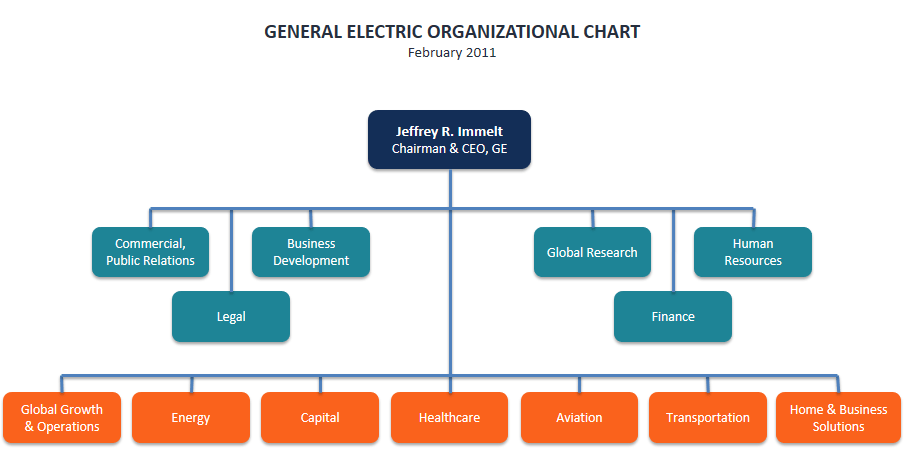Types of Organizations
Different organizational structures adopted by companies
Over 1.8 million professionals use CFI to learn accounting, financial analysis, modeling and more. Start with a free account to explore 20+ always-free courses and hundreds of finance templates and cheat sheets.
What are the Different Types of Organizations?
This article on the different types of organizations explores the various categories that organizational structures can fall into. Organizational structures can be tall, meaning that there are multiple tiers between the entry-level workers and top managers of the company. They can also be fairly flat, which means that there are very few levels between employees and management.

At a Glance
In the same way that no two people can ever be the same, no two companies are identical. Although they may come across as having similar organizational structures within an industry, there will always be differences between firms.
The main reason for adopting a structure is to outline a clear hierarchy of the different company positions. In such a manner, every subordinate knows who to report to. Considering how vital an organizational structure is to the different facets of the business, managers should take their time determining the type of structure to take on. This article highlights the main types of organizations that currently exist.
Flat Organization
A flat organization is exactly as its name suggests. While individuals may hold an expertise, hierarchy and job titles are not stressed among general employees, senior managers, and executives. In a purely flat organization, everyone is equal.
Flat organizations are also described as self-managed. The idea behind this organizational structure is to reduce bureaucracy and empower employees to make decisions, become creative problem solvers, and take responsibility for their actions. Since there are minimal or no levels of middle management, a company that adopts this structure can end up being more productive by speeding up the decision-making processes.
Apart from increased productivity, firms with flat organizations have leaner budgets, since they don’t involve any pricey middle-management salaries. The only thing to keep in mind is that this structure typically works best for small to medium-sized companies. This way, a firm can decentralize decision-making while still maintaining its corporate integrity.
Functional Organization
Also referred to as a bureaucratic structure, a functional organization is one that divides a firm’s operations based on specialties. Ideally, there’s an individual in charge of a particular function. It’s like any typical business that consists of a sales department, human relations, and a marketing department. It means that every employee receives tasks and is accountable to a particular superior.
A functional organization confers several benefits. For one, there’s a total specialization of work. Secondly, work is performed more efficiently since each manager is responsible for a single function. The only drawback to adopting a functional organization is the fact that there’s a delay in decision-making. All the functional managers must be consulted when making major decisions, which can take time.
Divisional Organization
A divisional organization structures its activities around a market, product, or specific group of consumers. For instance, a firm can operate in the United States or Europe, or sell products focused on a specific group of customers. Gap Inc. is the perfect case in point. It runs three different retailers – Banana Republic, Gap, and Old Navy. Although each one operates as a separate entity that caters to different consumer segments, they are all under the company Gap Inc. brand.
General Electric is another ideal example; it owns numerous firms, brands, and assets across different industries. Although GE is the umbrella corporation, each division works as an individual firm. The diagram below will give you an idea of what a divisional organization looks like.

Matrix Organization
A matrix organizational structure is a bit more complex, in that there’s more than one line of reporting managers. It simply means that the employees are accountable to more than one boss. Most firms that take on this organizational structure often have two chains of command – functional and project managers. This type of organization works best for companies with large-scale projects.
A matrix organization offers several benefits. They include a clear articulation of the company’s mission and objectives, effective use of limited resources, and improved retention of professionals throughout the life of a company. Additionally, a matrix structure provides a practical way of integrating the firm’s objectives with operations.
How to Choose from Different Types of Organizations
A type of organization serves as a framework that a firm can use to establish communication structures and authority among employees. However, it is crucial that a company chooses a type that suits its needs best.
1. Size
Size is a major determining factor when deciding which type of organization to adopt. A small to medium-sized business does not require a vast and highly-detailed organizational structure. On the other hand, larger companies require more intense frameworks to ensure that operations run smoothly. Such firms employ more staff and, therefore, require more managers. For such companies, a matrix organization is the most suitable.
2. Life Cycle
A firm’s life cycle is another essential factor to consider when setting up a company’s organization. Business owners who are trying to grow and expand their operations should choose a structure that allows for flexibility and smooth expansion.
3. Business Environment
Another factor that comes into play when determining the type of organization is the external business environment. A dynamic business setting where the consumers’ needs change constantly requires a stable and sound organizational structure that can weather the storm of a rapidly-changing marketplace.
The Importance of Adopting Proper Types of Organizations
1. Better Communication
Keeping open channels of communication is crucial to the success of every organization. As such, an organization needs to be designed in such a way that individuals and departments are able to coordinate their efforts.
2. Set Organizational Priorities
A sound organizational structure is essential for setting priorities. In a tall hierarchical structure, the managers and executives determine the most crucial objectives that need to be met first. The heads of departments can then determine how to allocate different resources and the specific tasks to designate first.
3. Better Employee Performance
If a company isn’t well organized, the employees won’t know which tasks to perform or who to report to. Defining the organizational structure makes the company objectives clear to every stakeholder. In such a way, every employee knows what he or she needs to do.
Depending on the type of organization, senior managers and executives are also able to establish their roles. They can determine whether they need to actively support their employees or simply assign tasks and await results.
Summary
Choosing a type of organizational structure is important to a company’s management. It’s therefore crucial that business owners pick the right organizational type to help operations run more smoothly. There are different types of organizations that a company can adopt, such as functional, flat, matrix, and divisional organizations.
When determining which type of organization to take on, there are several factors that should be taken into account. They include the size of the company, the business environment, and the life cycle that the company or its products are in.
Although it sounds like a daunting task, establishing an organizational structure is worthwhile and brings many benefits. For one, it improves communication among a company’s stakeholders. It also helps managers set priorities right. This way, managers know what resources to allocate to different departments. Finally, it helps ensure better employee performance.
Additional Resources
Create a free account to unlock this Template
Access and download collection of free Templates to help power your productivity and performance.
Already have an account? Log in
Supercharge your skills with Premium Templates
Take your learning and productivity to the next level with our Premium Templates.
Upgrading to a paid membership gives you access to our extensive collection of plug-and-play Templates designed to power your performance—as well as CFI's full course catalog and accredited Certification Programs.
Already have a Self-Study or Full-Immersion membership? Log in
Access Exclusive Templates
Gain unlimited access to more than 250 productivity Templates, CFI's full course catalog and accredited Certification Programs, hundreds of resources, expert reviews and support, the chance to work with real-world finance and research tools, and more.
Already have a Full-Immersion membership? Log in





